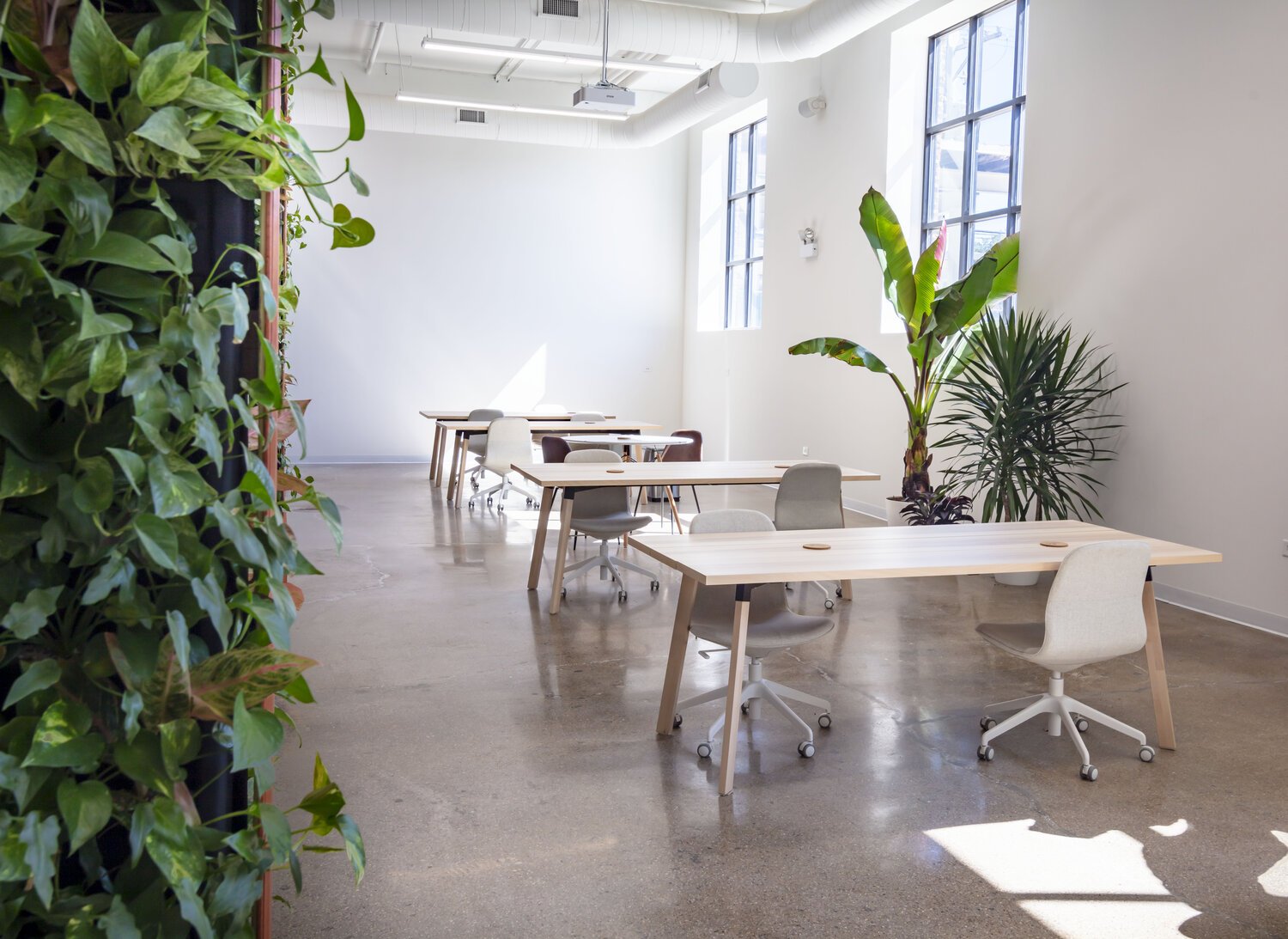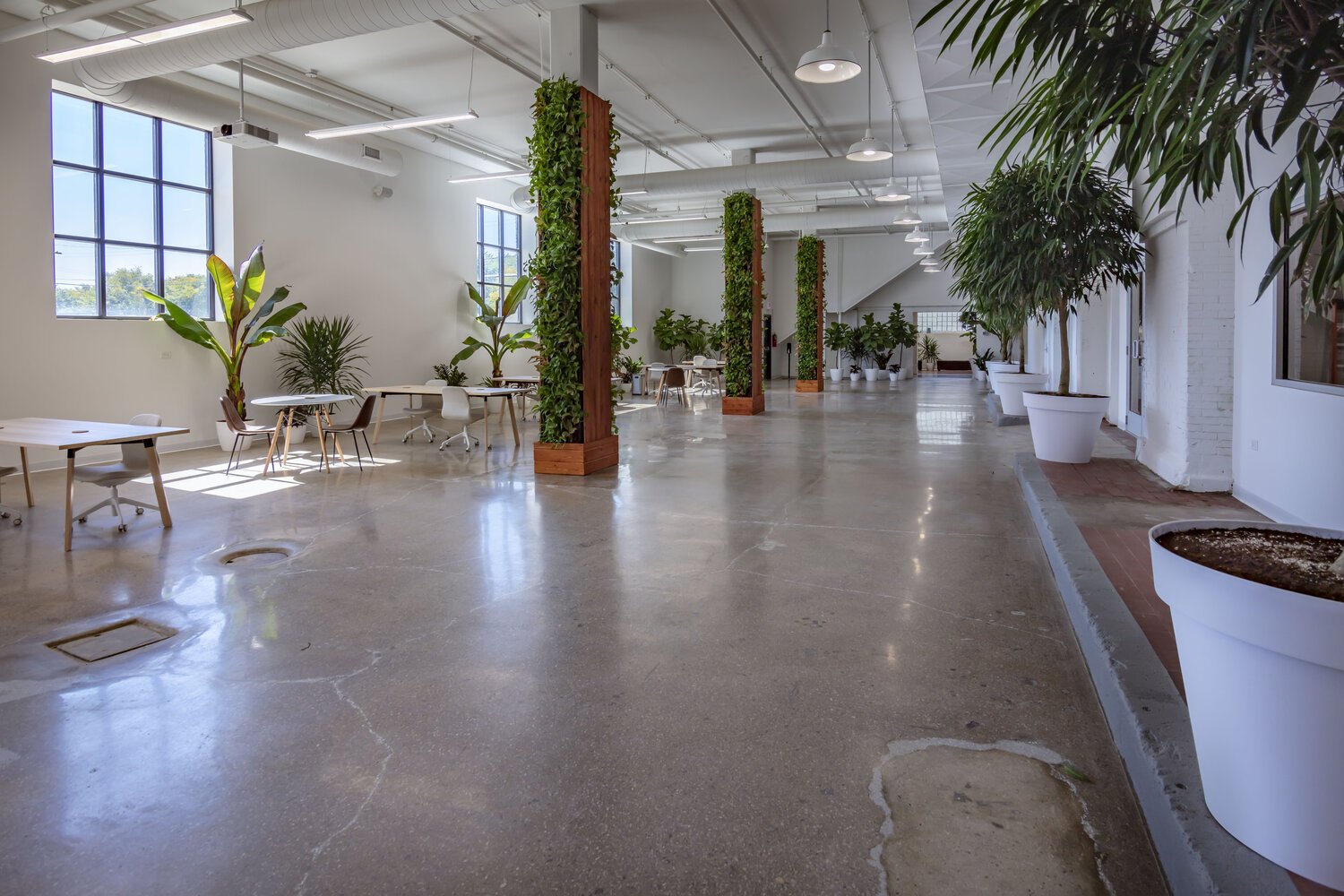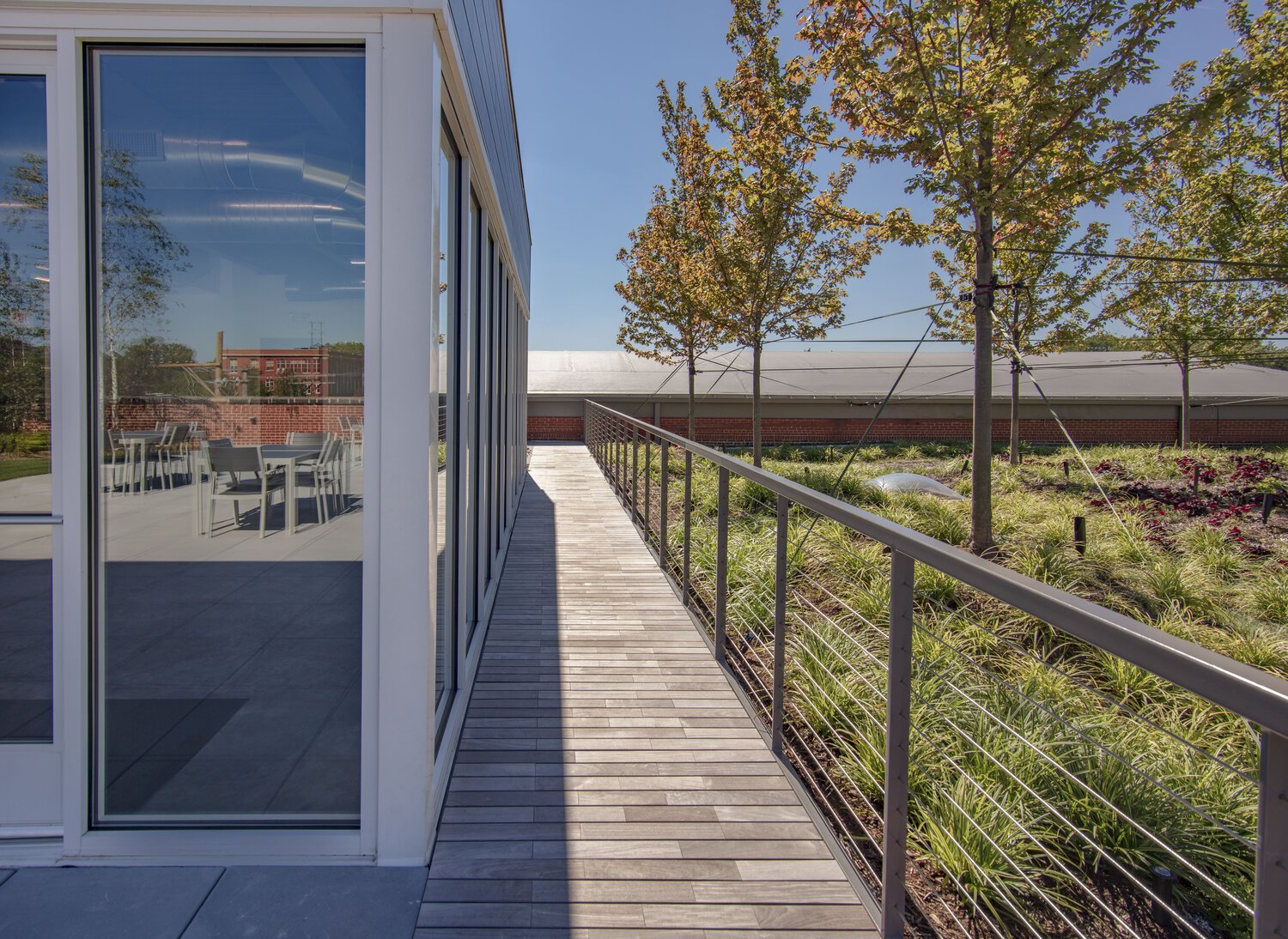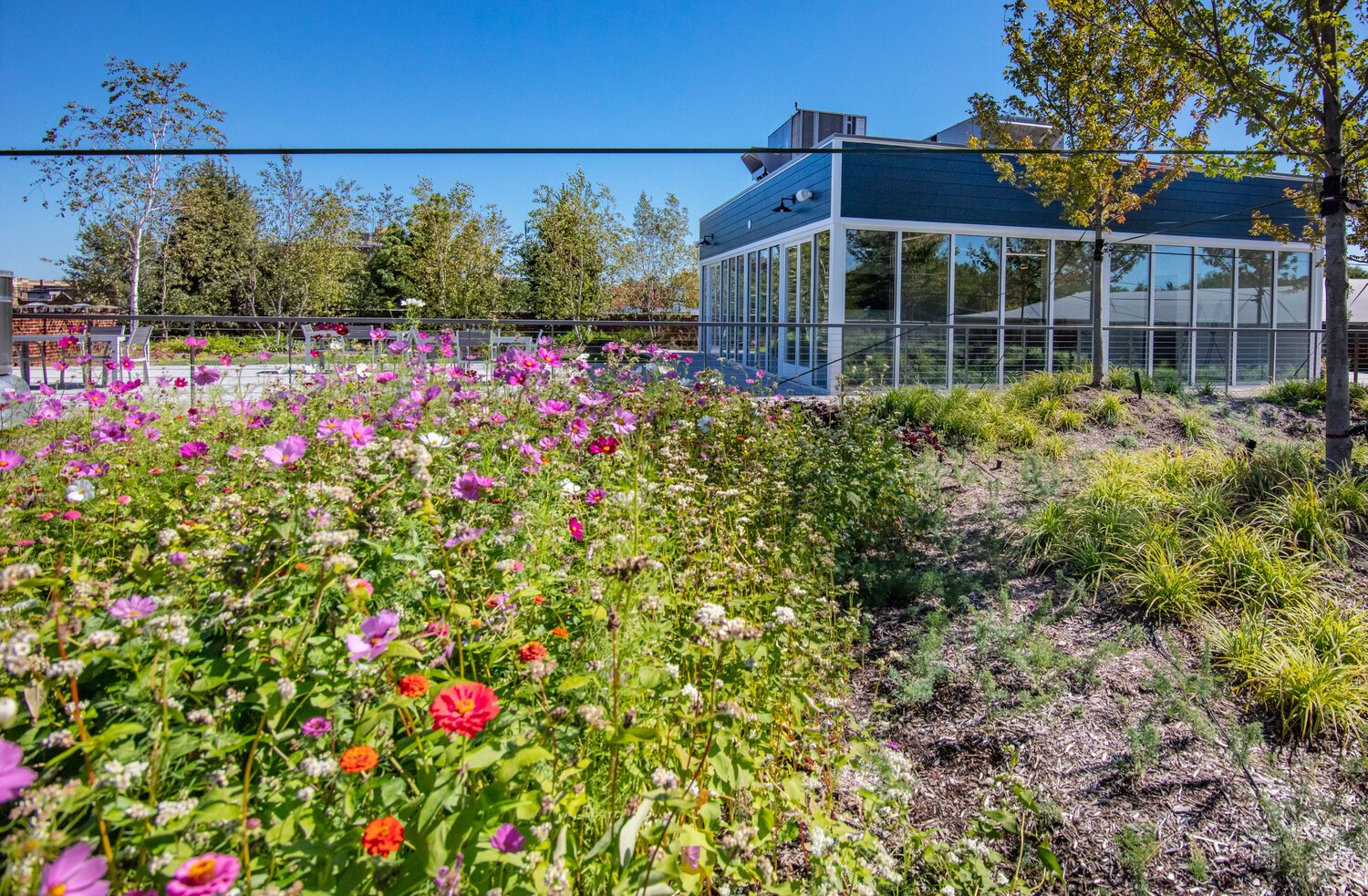Biophilic Design Shines at Omni HQ
The Omni team collaborated to design our headquarters from the outside in, creating an inspiring workplace immersed in nature. Omni installed and continues to maintain the vast array green infrastructure within and atop the building, from the 180 SF living wall that greets visitors in our lobby to our 33’-tall palm tree named Monty, to the robust and diverse rooftop garden that doubles as a flexible event space.
All these elements are beautiful green additions to our space, but what is truly meant by biophilic design, and what positive impacts does it have beyond aesthetics?
Understanding Biophilia and Biophilic Design
Biophilia is a term to describe humans' innate tendency to seek out and interact with nature.
When biophilia is applied as a design principle to the built environment – often referred to as biophilic design – there is an array of benefits not only to the function of a building and its surrounding environment, but also to the physical and mental wellbeing of the people within it.
In urban environments where there is less access to green space, biophilic design becomes even more important.
Cognitive Benefits: Mental Agility & Memory
Cognitive functioning encompasses our ability to think, learn and output either logically or creatively. This includes the directed attention that is required for repetitive tasks, such as routine paperwork, reading and performing calculations or analysis. It also includes operating in highly stimulating environments. Directed attention is energy intensive, and over time can result in mental fatigue and depleted cognitive resources (e.g., Kellert et al., 2008; van den Berg et al., 2007).
Having strong and/or routine connections with nature as part of our daily routine provides opportunities for mental restoration, which gives our higher cognitive functions a break. In turn, our capacity for performing focused tasks is greater than someone with fatigued cognitive resources.
Psychological Benefits: Adaptability, Alertness, Attention, Concentration & Mood
Psychological responses include responses to nature that impact restoration and stress management. Empirical studies have reported that natural environments provide greater emotional restoration and produce lower instances of tension, anxiety, anger, fatigue, confusion and total mood disturbance than urban environments with limited characteristics of nature (e.g., Alcock et al., 2013; Barton & Pretty, 2010; Hartig et al., 2003; Hartig et al., 1991).
Physiological Benefits: Heart Rate & Stress Levels
In order for our body and mind to stay resilient and adaptive, our physiological system needs to be tested regularly. This can be done through short term stressors (i.e., encountering an unknown situation or looking over a balcony from eight stories up), but it is important that exposure to these stressors is only enough to allow us to quickly respond and recover (Kandel et al., 2013).
Biophilic design acts as a buffer for physiological responses to environmental stressors, allowing for the restoration of bodily resources before system damage occurs (Steg, 2007).
Witness Biophilia at 4131 for Yourself
If you would like to experience Omni’s ability to create immersive green spaces and landscapes firsthand, email info@omniecosystems.com to set up a tour of our headquarters. If you are looking for a coworking space in Bronzeville, join Hatch Chicago and work in 4131’s Conservatory surrounded by 2,700 plants, including our palm tree named Monty.







